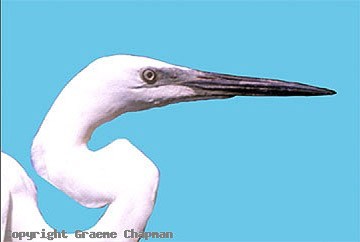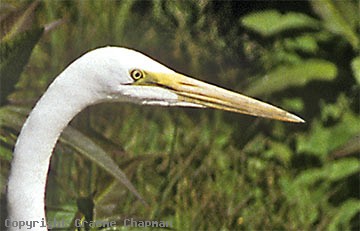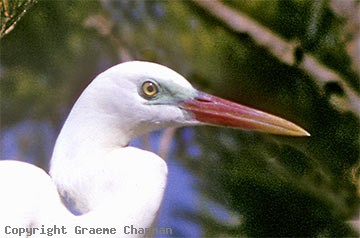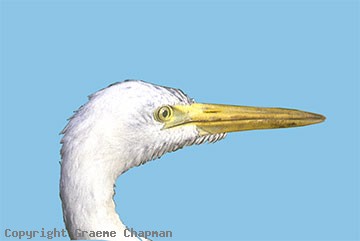Australian BirdsA closer look at Egrets
|
Identification of the all-white egrets causes problems for some people at times, in particular, Eastern Great and Intermediate Egrets in non-breeding plumage. Forget neck length, shape etc - just look at the face. The length of the commissural line (see xxe001 to 004) is absolutely diagnostic. Unfortunately most field guides either omit this point or fail to show it clearly enough because the figures are too small. The best illustrations are in HANZAB if you are lucky enough to have a copy. Many herons and egrets develop very striking face colours for a very short time at the height of the breeding season.
Unless you go to a breeding colony you are unlikely to ever see them looking so smart. Eastern Great Egrets develop a lovely turquoise colour on the face (so do White-necked Herons), Intermediate Egrets have an exquisite apple green face and red base to the bill (xxe003), Little Egrets show some red colour around the face and in Cattle Egrets, the face and bill turn from yellow to red - the bill has a yellow tip. The white phase of the Eastern Reef Egret develops a more subtle green face in breeding plumage (see xxe007).
|

xxe001 ... Great Egret, breeding. Black bill, grey-green lores, black legs, commissural line extends behind eye. |

xxe002 ... Great Egret, non-breeding, yellow bill and lores, dark legs, commissural line extends behind eye. |

xxe003 ... Intermediate Egret-breeding. Red & yellow bill, apple green lores, black legs, commissural line doesn't extend past eye |

xxe004 ... Intermediate Egret-non-breeding, Yellow bill and lores, legs black below "knee". |
